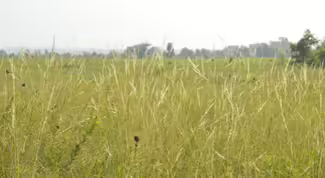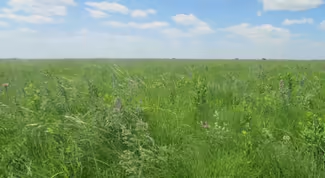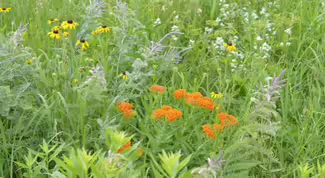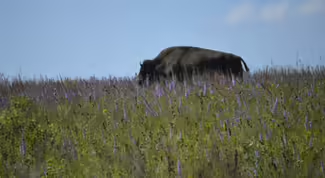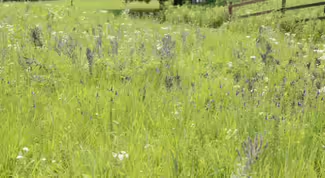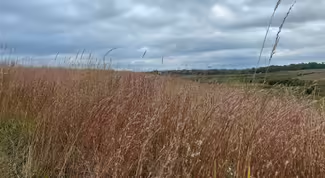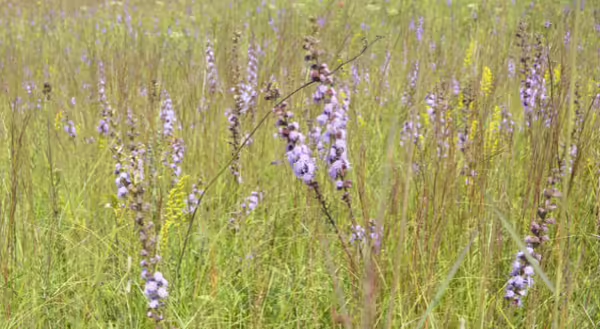
The first Saturday in June is recognized as National Prairie Day. Prairies hold a special place in my heart, since my work in prairies jumpstarted my love of plants and eventual path to graduate school and my current job.
I’ll never forget my environmental studies class in college when we spent part of the semester looking at prairie ecosystems and management. I was fortunate to go to a school that had a large arboretum including forest, wetland, and prairie. One class we were instructed to go out in the prairie, find a spot to sit, and make observations for an extended amount of time. I remember being awestruck by how much life was between the different blades of grass, hidden wildflowers and jumping grasshoppers, buzzing bees and critters leaving a rustling sound as they scurried around.
From that moment on, I was hooked and worked to learn all I could about prairies. I worked at prairies in Minnesota, North Dakota, and South Dakota, and found some favorite spots to visit in Iowa and of course, Illinois.
What makes a prairie?
Oftentimes the prairie is overlooked in comparison to the grandeur of a forest, but I hope those reading a blog about grasses can appreciate an ecosystem that is largely comprised of grass. Here in Illinois we’re fortunate to have the tallgrass prairie, where Big Bluestem, Indian Grass, and Switchgrass can grow 6 to 8 feet tall. While grasses play an important role, prairies are teeming with wildflowers, also called forbs, that bloom from spring through fall, as well as shrubs.
Prairies are known for their rich soil, one of the main reasons that led to their conversion to agriculture. Prairies are also a disturbance dependent ecosystem, relying on fire and grazing to keep woody plants out and prevent succession from occurring (the natural process of change in plant communities from small, disturbance dependent species to a mature forest).
Different types of prairies
Across the U.S. we have three types of prairies: tallgrass, mixed grass, and shortgrass. I’m sure you can guess one of the differences in these prairies, but what drives the different species and mature sizes of the grasses that occur in these different prairies? Climate and soil conditions are the main drivers that determine the different plant communities we find across the U.S. The westernmost prairie is the shortgrass prairie, which has the harshest climate including long winters and higher frequency of drought, while the easternmost prairie is the tallgrass prairie, with milder winters, longer growing seasons, and more rain.

Visiting an Illinois Prairie
Illinois was once home to vast acres of prairies, but today little remains. Some of the highest quality prairie remnants (unplowed prairie lands) that remain in Illinois can be found in cemetery plots or on top of bluffs or rocky areas not accessible with a plow. There are many opportunities to visit prairie restorations as well, lands that were once prairie that have been planted back with prairie plants and are under management with fire and/or grazing. A few of my favorite spots include Loda Cemetery Prairie, Nachusa Grasslands, and Lake in the Hills Fen. Have you been to any of these spots? Where is your favorite place to experience prairie in Illinois?
Thank you for reading!
Never miss a new post! Subscribe to our email list to get updates each time a new post is available.
Give us feedback! How helpful was this information (click one): Very helpful | Somewhat helpful | Not very helpful
ABOUT THE AUTHOR: Erin Garrett is a Natural Resources, Environment, and Energy Educator for University of Illinois Extension serving Alexander, Johnson, Massac, Pulaski, and Union counties. Erin develops and delivers high impact programming to adults and youth to help them develop an appreciation for natural resources and to empower them to make small changes to positively impact the environment. Erin’s programming focuses on why homeowners should consider choosing native plants, how to support native pollinators, how to identify grasses, how to identify and manage invasive species, and developing an appreciation for prairie ecosystems.
